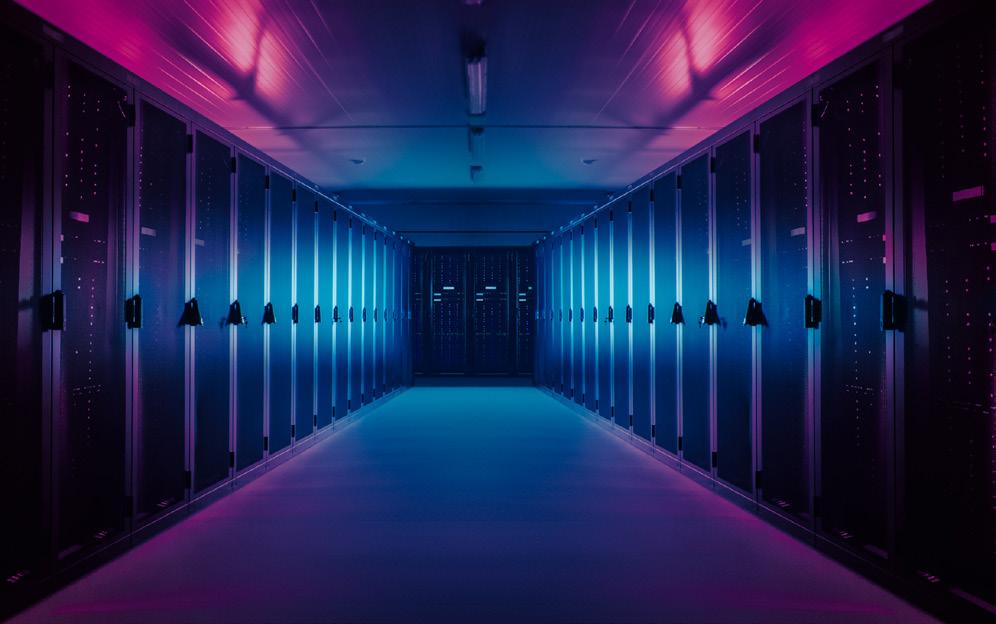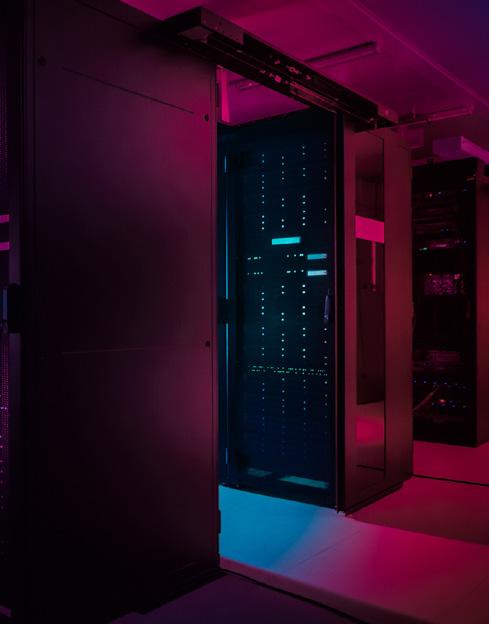
8 minute read
Security/Cybersecurity
from DCR March 2020
End of an era
How will Windows 7 End-of-Life affect the data centre? Daniel Goldberg, senior security researcher at Guardicore Labs gives us his insight.
Advertisement
On 14 January, Windows Server 2008, Server 2008 R2 and Windows 7 were announced End-Of-Life (EoL). Put simply, this means that unless your organisation is one of a few exceptions – all the machines running the above-mentioned operating systems have now ceased to receive Microsoft security updates.
The next time an attacker finds a vulnerability affecting these operating systems, no security patch will be provided, and the machines will remain defenceless. Of course, many users will rightly upgrade their systems. But for many data centres, upgrading is not an option they can yet consider. In such cases, mitigating the danger from insecure software is a challenging yet mandatory task they must undertake.
The risks to data centres of continuing to run EoL versions longterm is hard to understate. Despite being more than a decade old, these operating systems are still in wide use. The majority of data centres run these operating systems in their production environments, with many assigned critical roles such as domain controllers. Ned Pyle, a Microsoft principal PM, estimates that Windows Server 2008 and 2008 R2 make up nearly a third of all server machines worldwide.
In the short-term, it is unlikely anything drastic will happen to unsupported Windows Server machines. Most software vulnerabilities are not relevant to servers and existing defences will do the job. But the long tail risk is immense; the next BlueKeep, EternalBlue or other remote code execution vulnerabilities will inevitably be used to cut through data centre networks. All that will be required is a foothold inside an organisation and any vulnerable server will be quickly compromised. Such footholds are easy to acquire, as breaches in the UN (Microsoft Sharepoint), Travelex (PulseSecure VPN) and many others make clear.
If upgrading was easy, everyone would be doing it It is enough to perform a couple of software upgrade cycles to find out that upgrading is never as simple as we wish. Just listing the reasons why this process is complicated could take longer than this article. Rather than giving up, there are a number of steps that can be taken to minimise the danger from new vulnerabilities. New vulnerabilities will be discovered and publicised, but the vast majority of vulnerabilities use the same few common attack vectors.
To start with, we encourage organisations to follow hardening best practices for Windows Server 2008 R2 and Windows 7. Microsoft regularly publishes such guidelines as part of the Microsoft Baseline Security Analyser.
First, wherever possible, disable SMBv1 and enable SMBv2 message signing. This will prevent many lateral movement attacks, including all attacks which use the EternalBlue family of vulnerabilities and many other attack techniques abusing NTLM relaying.
Second, change network authentication settings to block usage of obsolete and weak authentication methods such as NTLMv1 and LanMan. This will eliminate many token stealing attacks employed by popular offensive security tools such as Mimikatz.
Last, to help investigations of any future security incidents and reduce the risk of tampered logs, we recommend forwarding all event logs to a centralised and hardened server. These steps are not complicated to implement in most data centres and will significantly reduce your attack surface from many known attack vectors.
Assume breach and segment An attacker having a foothold in your network is practically a given, so defences should not only be strong walls but also chokepoints, compartments and other defensive tactics. The strongest and simplest tool is segmentation, separating the network into logical pieces. Applying segmentation, organisations can reduce their network attack surface and lower their risk of being breached.
The classic example of segmentation is a DeMilitarized Zone (DMZ), although this is mostly obsolete in today’s connected networks. A more practical example is blocking cross SMB traffic. While servers often communicate with each other, they typically do not use the SMB protocol for this purpose. Blocking it using endpoint firewalls eliminates the attack vector used by the NotPetya worm which nearly brought down Maersk as well as many other organisations.
Another good application of segmentation is limiting legacy systems’ access to the internet. Most legacy system behaviour is well understood and whitelists for their network activity can be created. In such cases, alerting on deviations from whitelisted behaviour is an effective tool to detect compromise of legacy machines. The last point is worth emphasising: early detection of breaches and compromises is one of the primary advantages of segmentation.
Not just Windows It’s not just older Microsoft products within a data centre that present EoL risks. While the transition to web-based software has simplified the life of IT departments in endpoint systems, servers are just as problematic as they were in the past if not more so.
Oracle Database is a frequent culprit of compromise in many organisations, along with Red Hat Enterprise Linux and other old platforms. Routers, considered by many to be supported as long as they work, are frequent targets of high-end attackers and rarely receive software patches.
Get a shovel, dig defences We cannot afford to get rid of all vulnerable legacy software, no matter how hard we try. Our only hope is creating moats around vulnerable systems and monitoring them for breaches. The latest end-of-life announcements from Microsoft will hopefully help spotlight such systems and help security professionals prioritise these systems for protection.
Data centres: The future of cyberwarfare

While cyber warfare may sound like something from a sci-fi film, it’s very much a modernday reality. Liviu Arsene, global cybersecurity researcher at Bitdefender outlines the dangers faced by data centres and highlights ways in which we can protect our assets.
In a world consumed by the power of data, cybersecurity is of paramount importance. As attackers become more sophisticated, they will increasingly seek to target data centres due to their importance in storing critical data, as well as the understanding that many of their predominant features can be controlled remotely. Failure to properly secure data centres, something that even large companies have issues with, places data centres at great risk of a breach
When these attacks are successful, one of the most sobering statistics is the cost to companies. Costs that span everything from detection and escalation, notification, post data breach response, and lost business. In fact, the average cost to a business in 2018, according to research sponsored by IBM and conducted by the Ponemon Institute, was $7.91 million.
What is even more alarming than the monetary cost of a data breach
is the amount of data that is at risk each time; on average 25,000 records are compromised every time a cyberattack is successful.

Data centres vs cyberwarfare So how important will data centres be during an era of cyberwarfare? As the proliferation of IoT (Internet of Things) devices continues, an increasing number of important buildings and power stations management systems and sensors will feature IoT functionality.
The encouragement of such mainstream connectivity between devices has facilitated a rapid expansion of the attack surface, the likes of which the world has never seen before. This has unfortunately introduced unprecedented numbers of attacks, ranging from Distributed Denial of Service (DDoS), buffer-overflow, memory corruption and zero-day against industrial, commercial, military, and consumer systems and devices.
As cyberwarfare becomes a more common form of conflict, cloud infrastructures will undoubtedly be targeted and used to deliver threats or compromise data. It will be more important than ever to ensure that data centres are focused on addressing threat vectors revolving around unpatched vulnerabilities and misconfigurations that can spread across private, public, or hybrid infrastructures. Even something as simple as regularly updating security software will greatly reduce the risk from cyber-attacks.
Cyberwarfare is also an extremely relevant issue given the recent tensions between states, where many cybersecurity experts have warned that the physical conflict could encourage retaliatory attacks from groups of hackers.
With large corporations and important military buildings and bases undoubtedly the target of such attacks, it is certain that cloud infrastructures will likely fall under the “collateral damages” category as attackers will either use the cloud to their advantage or compromise cloud infrastructures belonging to select targets.
Protecting data centres There are many ways to protect data centres; the same basic rules apply with most technology, with keeping security solutions updated at all times being key. However, with the increase in stacked technologies aimed at boosting productivity, performance, and scalability, the security needed to protect them has changed.
Legacy data centres relied on reducing systems to a single dimension, whereas virtualisation and cloud infrastructures are an enabler for software defined data centres (SDDC). Securing these types of infrastructures involves a policy-based approach that intertwines security with applications, instead of applying traditional network-based security.
This requires organisations to rethink the way they store and secure their data. As a result, new, application-aware security controls are needed. Application-aware security ensures that security policies are enforced automatically across any network configuration, based on the workload’s role, and not its location within the infrastructure, as would happen with traditional infrastructures.
The most important aspect of security in these environments is ensuring that the remediation capabilities are not impacted. By fully leveraging the tight integration with hypervisors that control the hardware resources allocated to virtual workloads, new security layers that sit below the guest operating system can offer unparalleled visibility into threats. This can be particularly useful when defending against new or unknown vulnerabilities, such as those seen in cyberwarfare, that aim to compromise virtual workloads.
Coupled with visibility across all endpoints and networks, organisations relying on endpoint detection and response capabilities will have the ability to identify and plug potential data breaches before they cause permanent damages, while also having the investigative capabilities required to paint a complete picture into an attack timeline. Breaking the attack kill chain as early on during a potential data breach requires more than just security, but also visibility capabilities that help organisations during forensic investigations.
Ultimately, data centres are vital pieces of infrastructure. As such, their security, both physical and cyber, is of the utmost importance. Developing new and more efficient ways to ward off cyberwarfare and protect data centres should be a focus for companies from every sector but should also be top of the agenda for governments.

